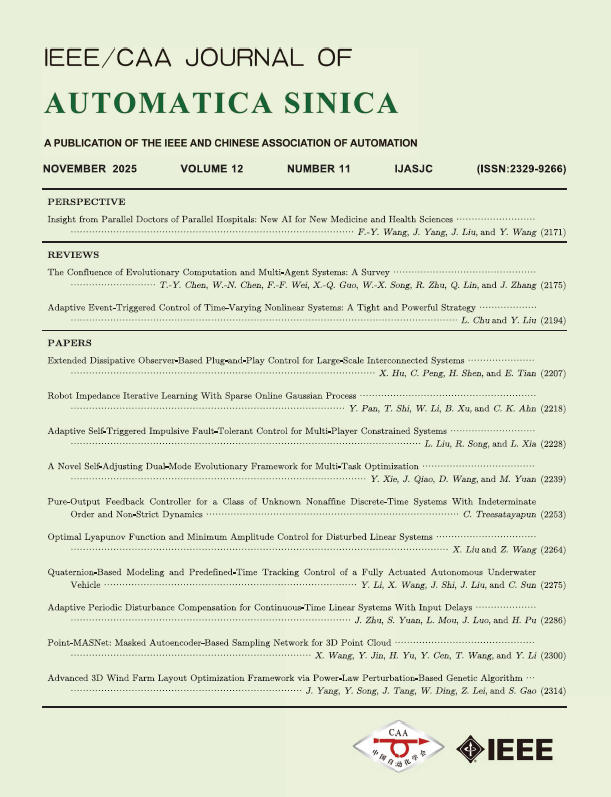2017, 4(2): 205-215.
doi: 10.1109/JAS.2017.7510505
Abstract:
Grid integration of wind power is essential to reduce fossil fuel usage but challenging in view of the intermittent nature of wind. Recently, we developed a hybrid Markovian and interval approach for the unit commitment and economic dispatch problem where power generation of conventional units is linked to local wind states to dampen the effects of wind uncertainties. Also, to reduce complexity, extreme and expected states are considered as interval modeling. Although this approach is effective, the fact that major wind farms are often located in remote locations and not accompanied by conventional units leads to conservative results. Furthermore, weights of extreme and expected states in the objective function are difficult to tune, resulting in significant differences between optimization and simulation costs. In this paper, each remote wind farm is paired with a conventional unit to dampen the effects of wind uncertainties without using expensive utility-scaled battery storage, and extra constraints are innovatively established to model pairing. Additionally, proper weights are derived through a novel quadratic fit of cost functions. The problem is solved by using a creative integration of our recent surrogate Lagrangian relaxation and branch-and-cut. Results demonstrate modeling accuracy, computational efficiency, and significant reduction of conservativeness of the previous approach.
Bing Yan, Haipei Fan, Peter B. Luh, Khosrow Moslehi, Xiaoming Feng, Chien Ning Yu, Mikhail A. Bragin and Yaowen Yu, "Grid Integration of Wind Generation Considering Remote Wind Farms: Hybrid Markovian and Interval Unit Commitment," IEEE/CAA J. Autom. Sinica, vol. 4, no. 2, pp. 205-215, Apr. 2017. doi: 10.1109/JAS.2017.7510505.


 E-mail Alert
E-mail Alert


